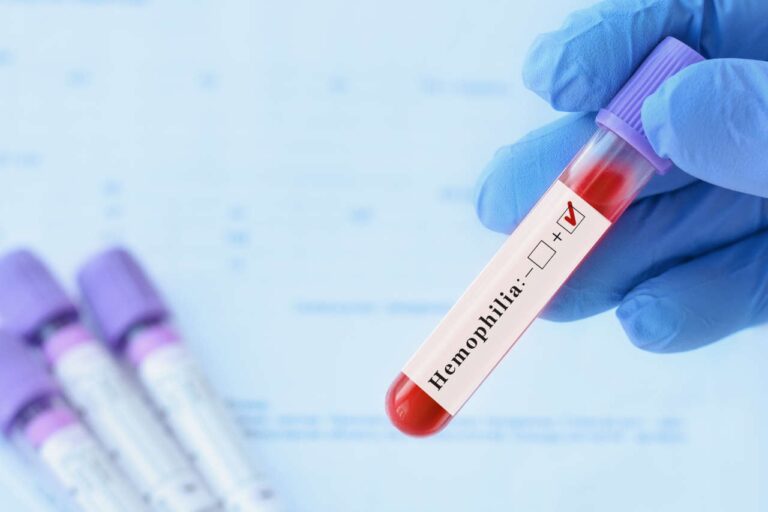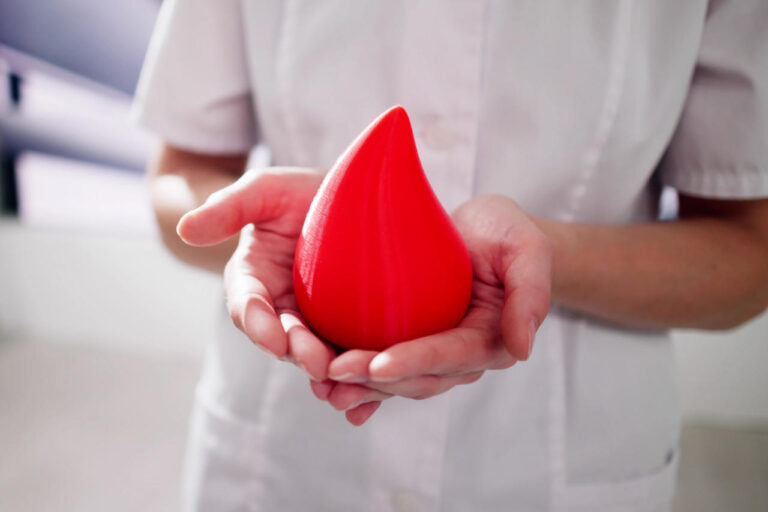
Hemophilia is an inherited genetic condition in which a person’s blood does not clot properly due to the lack or absence of certain blood-clotting proteins. Hemophilia A and hemophilia B are the two most common types of hemophilia and can put people at risk of prolonged and excessive bleeding following a minor injury or trauma.
Although both types (hemophilia A and B) affect the blood clotting process in an individual, they differ in terms of genetic cause, missing blood clotting factor, prevalence, and course of treatment.
Speak to a Specialist About Copay Assistance
This article discusses the key differences between hemophilia A and B that can help you navigate the treatment process.
Hemophilia A vs. Hemophilia B: Key Differences
The key factors that differ in hemophilia A and B are as follows:
Genetic Cause
Hemophilia mainly occurs as a result of an X-linked mutation, which means genes encoding for blood clotting factors or proteins become altered. These genes are typically present on X- chromosomes, which is why hemophilia is listed under the category of X-linked genetic disease.
In hemophilia A patients, gene F8 becomes defective, which results in the underproduction of blood clotting factor VIII (FVIII). People with hemophilia B have a defective F9 gene, which leads to low levels of blood clotting factor IX (FIX). The alteration in these genes (F8 and F9) results in a deficiency, or impaired function, in the corresponding clotting factor.
Missing Blood Clotting Factors
Blood clotting factors work to clot the blood after an injury to prevent excessive bleeding. As mentioned earlier, defects in genes that code for blood clotting proteins can result in low levels of blood clotting factors.
In the case of hemophilia A, patients lack blood clotting factor VIII (FVIII). Similarly, hemophilia B patients lack blood clotting factor IX (FIX). Hence, the lack or absence of blood clotting factors (FVIII and FIX) causes poor blood clot formation in hemophilia patients.
Prevalence or Incidence
In general, both hemophilia A and B are more common in males than females. Since hemophilia is an X-linked genetic disorder, males receiving the X chromosome with a defective gene from the carrier mother develop hemophilia easily.
In fact, 1 in every 5,617 male births is affected by hemophilia A, and about 1 in every 19,283 male births in the U.S. are estimated to have hemophilia B, according to the CDC.
Approximately half of people affected have hemophilia A, which is approximately four times more frequent than hemophilia B.
Females are less likely to develop hemophilia as they would need to receive abnormal genes from both parents. This occurs rarely.
Hemophilia Course of Treatment
The treatment course for hemophilia A and hemophilia B patients is almost the same but slightly differs. For instance, hemophilia A patients receive a regular infusion of blood clotting factor VIII in a replacement therapy, while hemophilia B patients receive factor IX. This procedure takes about an hour to complete.
Get Financial Assistance
Hemophilia A vs. Hemophilia B: Key Takeaways
Hemophilia A and hemophilia B are both genetic conditions that interfere with the ability of blood to clot. This occurs due to a lack of specific blood clotting factors. While both conditions have similar symptoms and treatments, they differ in missing blood clotting factors and genetic causes. Similarly, in terms of incidence, men are more likely to develop hemophilia than females. Hemophilia A is four times more common in men than hemophilia B.
REFERENCES:
- Castaman, G., & Matino, D. (2019). Hemophilia A and B: Molecular and clinical similarities and differences. Haematologica, 104(9), 1702-1709. https://doi.org/10.3324/haematol.2019.221093
- Mehta, P., & Reddivari, A. K. R. (2023). Hemophilia. StatPearls – NCBI Bookshelf. https://www.ncbi.nlm.nih.gov/books/NBK551607/#:~:text=Hemophilia%20A%20and%20B%20are,to%20avoid%20and%20treat%20bleeding
- Bolton-Maggs, P. H., & Pasi, K. J. (2003). Haemophilias a and b. The Lancet, 361(9371), 1801-1809. https://doi.org/10.1016/S0140-6736(03)13405-8
- Miller, C. H. (2021). The clinical genetics of hemophilia B (factor IX deficiency). The Application of Clinical Genetics, 445-454. https://orcid.org/0000-0002-3989-7973













